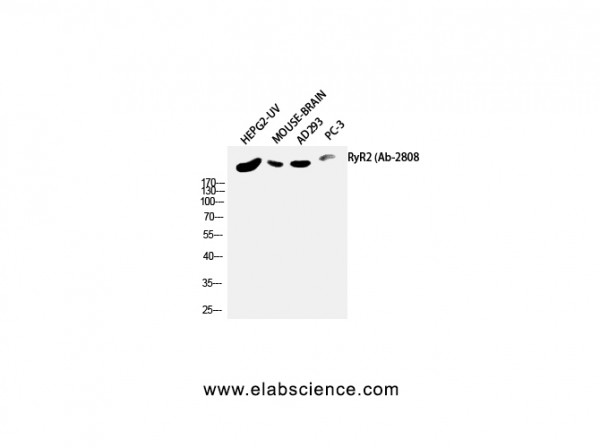Bei Fragen nutzen Sie gerne unser Kontaktformular.
Bestellen Sie auch per E-Mail: info@biomol.com
Größere Menge gewünscht? Bulk-Anfrage
Bestellen Sie auch per E-Mail: info@biomol.com
Größere Menge gewünscht? Bulk-Anfrage
Zuletzt angesehen

| Schlagworte: | Anti-RyR2, Anti-RYR2, Anti-RYR-2, Anti-hRYR-2, Anti-Ryanodine receptor 2, Anti-Type 2 ryanodine receptor, Anti-Cardiac muscle ryanodine receptor, Anti-Cardiac muscle ryanodine receptor-calcium release channel, RyR-2 Polyclonal Antibody |
| Hersteller: | Elabscience |
| Hersteller-Nr: | E-AB-32840 |
Eigenschaften
| Anwendung: | WB, IHC (paraffin), IF, ELISA |
| Antikörper-Typ: | Polyclonal |
| Konjugat: | No |
| Wirt: | Rabbit |
| Spezies-Reaktivität: | human, mouse, rat |
| Immunogen: | Synthesized peptide derived from human RyR-2 around the non-phosphorylation site of Ser2808. |
| Format: | Purified |
Datenbank Information
| KEGG ID : | K04962 | Passende Produkte |
| UniProt ID : | Q92736 | Passende Produkte |
| Gene ID : | GeneID 6262 | Passende Produkte |
Handhabung & Sicherheit
| Lagerung: | -20°C |
| Versand: | 4°C (International: -20°C) |
